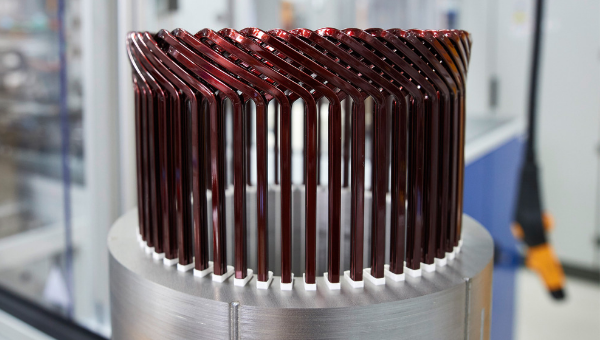
Everyone knows whether their car is petrol or diesel. Most people know how many cylinders their engine has. Many motorists know a good deal more and of course, knowledge is exponentially greater in the automotive trades. A lot of general knowledge about engines seems to come to us by osmosis; it’s just there.
As far as electric drivetrains are concerned, such knowledge is absent (except among technicians in the field). Manufacturers simply aren’t offering any deep information about the motors they use and why.
Take the Nissan Leaf. On the company website there’s a link to full specifications for the model. Power is mentioned, as is torque, range, and a few other things but there are no technical details about the motor itself. Neither is there any to be found in the official press release.
It’s much the same with other electric models from other manufacturers. Even on the Formula E website, where you’d imagine more technically oriented fans could get some technical information, the only detail mentioned is that the motors are AC. There is more information available on specialist websites but one has to take a packed lunch and go a-hunting to find it.
Electric motors are everywhere but motors used in general industry differ from motors suitable for electric vehicles. Many industrial motors work at constant speeds under fairly constant loads. Electric motors for EVs are subject to widely varying loads and speeds all of the time.
It’s not difficult to understand why manufacturers haven’t yet supplied more technical information about the types of electric motors they’re designing and using. Although electric motors seem much simpler in operation than internal combustion engines, it’s not as simple as that.
The operating and control principles of electric motors are very complex, and there’s no grounding in the public mind to build upon. The terms needed to explain the workings of electric motors are alien to everyone except those working in that sector of the industry.
Sure, there’s a basic understanding of AC and DC but not much more than that. However, that’s enough to get started with an explanation because AC and DC probably define the two basic categories of electric motor. So, why would an EV manufacturer choose one over the other?
Conventional DC motors are probably what most non-trade people think of when considering electric motors. They’ve been popular with EV manufacturers in the past and their characteristics are broadly suited to EV applications.
Also, they operate on DC current, which is what batteries supply directly. Controlling DC motors can also be relatively simple. All good, but on the negative side conventional DC motors have carbon brushes acting on commutators. They’re often referred to as brushed motors because of this feature.
Current for the rotating component (rotor/armature) of a conventional DC motor passes through the brushes and commutator and into the rotor windings to generate a composite electromagnetic field. However, commutator/brush assemblies are a source of electrical loss and inefficiency. It’s a technology that dates back to the earliest days of electrical experimentation.
What’s more, commutator/brush assemblies also make DC motors less reliable in long term operation, unless they are serviced. One of the many advantages of electric motors in EV applications is their low maintenance requirements. Brushed DC motors are a step away from that advantage and they’re no longer used much, if at all, in any EVs of which we know.
There’s another type of DC motor that has no commutator or armature windings. It’s called a Permanent Magnet Brushless DC Motor, or BLDC. Unlike a brushed DC motor, a BLDC rotor is not electrically connected to any other part of the motor. In fact its only mechanical connection with the rest of the motor is the bearings in which it rotates.
The rotor has at least two permanent magnets but usually many more that supply the constant magnetic field required for operation. The stator will have a number of windings that are sequentially fed direct current, which creates magnetic poles that effectively rotate, simultaneously pulling and pushing the permanent magnets attached to the rotor. This generates torque.
The torque curve of a BLDC motor is flat and linear, which is excellent. However, it’s limited because of the back-emf created in the coils. This causes torque to decrease as speed increases. We discussed back-emf in our previous article on regenerative braking.
Basically, the current flowing in windings creates a voltage that opposes the applied voltage and the effect is most significant at higher speeds, which is why torque reduces at higher speeds. These and other factors mean that BLDC motors are best suited to smaller vehicles.
Read Electric motors (Part 2). Alternatively, view full article and accompanying imagery in Australian Automotive.